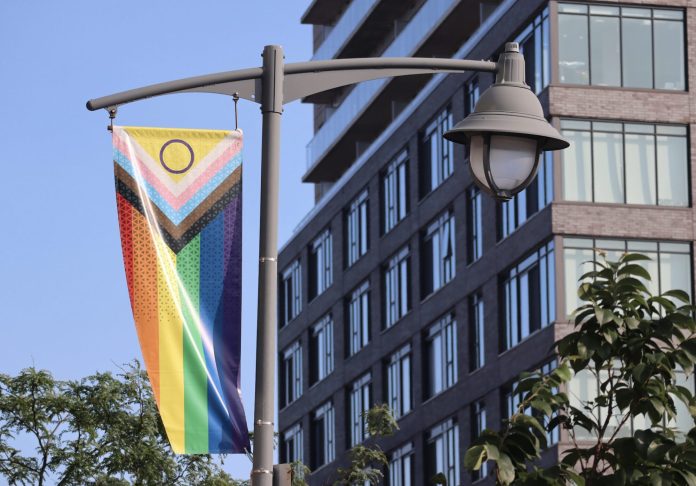Why do we celebrate Pride? It’s a question many ask themselves decades after the Stonewall riots, the decriminalization of gay acts, and the legalization of same-sex marriage.
While there has been progress, the movement continues for many Queer folk who are still fighting for equal rights. According to 2020 stats, it was still illegal to be gay in 70 countries – roughly one third of the world. Twelve of those countries still have the death penalty if you are caught or suspected of being part of the LGBTQ2S+ community.
Even in Canada, progress is relatively new. Most living generations were born in a time during which equal rights for Queer folk were not the ‘norm’. Same-sex sexual activity between consenting adults was decriminalized in 1969, with same-sex marriage becoming legalized in 2005 — the fourth country in the world to do so. On June 11, 2003, Renée Sauve and Tracey Braun were Ottawa’s first gay couple to get married. Bill C-16, which supports the rights of transgender or gender diverse individuals was passed in 2017, and conversion therapy was banned in 2022.
In 2024, acceptance is encouraged, but not always present. Last year, demonstrations were held in Westboro to try and silence members of the LGBTQ2S+ community and reverse course on decades of progress surrounding basic human rights.
Combiing through old newspaper clippings and historical accounts of what life was like for Queer individuals in Ottawa, KT compiled a timeline of Queer-related events which have touched Canada’s Capital city – some of which have happened in Kitchissippi’s own backyard.
1916: A public servant by the name of Charles P. was charged with gross indecency after an encounter “with a young fellow” named James at Elgin and Nepean Streets downtown. According to historical accounts from Charles, the relationship began when James asked if he liked to sing and invited him back to play the piano. Police found out about the pair’s connections when they picked up James on a house-breaking charge a few weeks later.
In court James testified: “He asked me to go into bed with him… I was about 45 minutes with him. He felt me all over with his hands.”
The case was later dismissed after Charles’ friends spoke to his “reputation of morality.”

August 30, 1971: About 80 men and women who supported homosexuals demonstrated on the front lawn of Parliament Hill – the first time a demonstration of this kind was held in Canada. Billed Gay Day, it was calling for an end to the discrimination against homosexual individuals.
October 16, 1974: A dozen Gays of Ottawa members paraded in front of the Immigration department offices and handed out brochures stating that Section five of the immigration act was homophobic. It prohibited the entry of Queer people into Canada and labeled them as “undesirable types.” Earlier in the day, organizers from the group met with senior officials of the immigration department to protest the move.
“As it stands, it’s illegal to let homosexuals into Canada, but once you are here, it is legal,” Ron Dayman, chairman of the Gays of Ottawa committee, told the Ottawa Citizen. “The people we talked to within the department agreed the law was medieval, archaic and that it should be changed.”
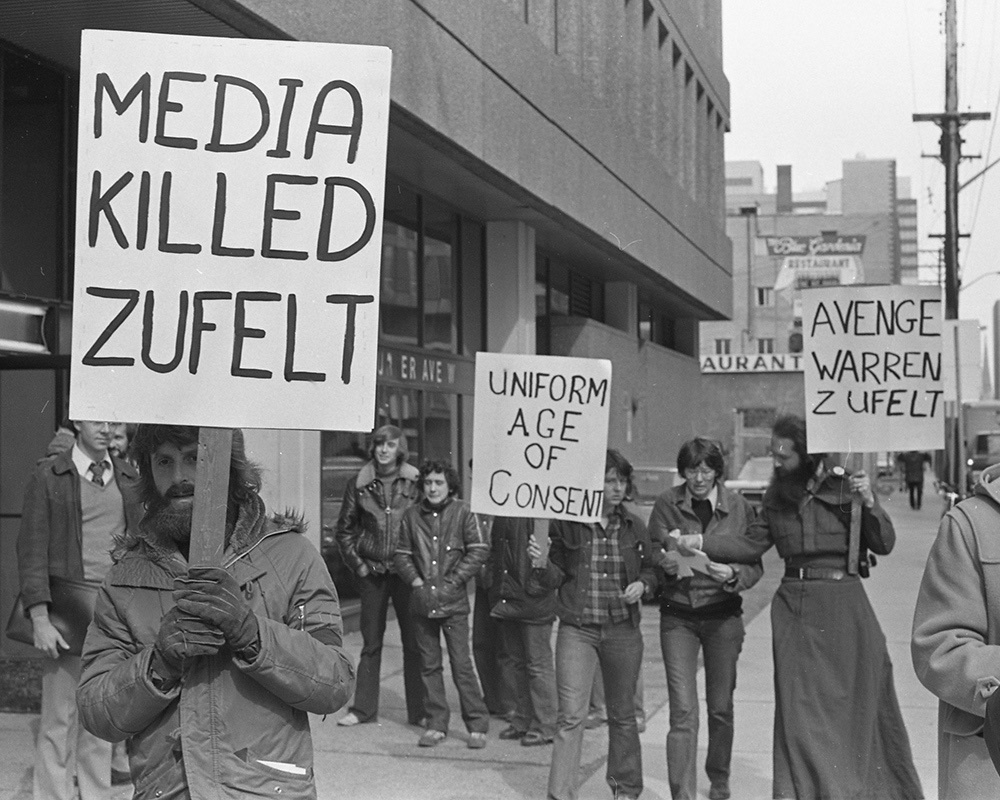
March 21, 1975: Fifteen representatives from the group Gays of Ottawa protest outside of the Ottawa Journal newspaper building and the city police station. Organizers said they were against discriminatory laws and persecution from members of the media and police officers against homosexual individuals.
Their outcry came after 34-year-old Warren Zufelt jumped to his death from the rooftop of his condo building at 20 Chesterton Dr. in Nepean. The public service worker was accused and charged with gross indecency in connection to a male prostitution ring involving juveniles. The ring uncovered March 4, 1975 also led to the arrest of 17 other men. Their names and addresses were posted in local media
Speaking with the Ottawa Journal, Zufelts’ lawyer Leonard Shore, who met with his client a day before his suicide mission, said the gay man “was very upset and nervous and didn’t know what to do.”

A news release from protest organizers said “continued police persecution amounts to a homosexual witch hunt. Sensationalistic headlines and reportage have totally distorted the nature of these cases and created an atmosphere of hysteria. These persons are suffering the penalties of convicted persons even before trial.”
During the trial branded “Ottawa’s sex scandal”, it was revealed the 16-year-old prosecution chief witness was coached on what to say by police. The youth committed suicide during the trial.
May 25, 1976: The Wellington Street West gay bathhouse was raided. Police charged two men with gross indecency and 22 others with being “found-ins”. Marcel Rollin, 27, Jean Danfousse, 25, and Andrew Mackey, 28, were also charged with keeping a common bawdy house.
After the raids, Gays of Ottawa group organizers blamed the raids on an effort to clean up Canada in time for the upcoming Montreal Summer Olympics.
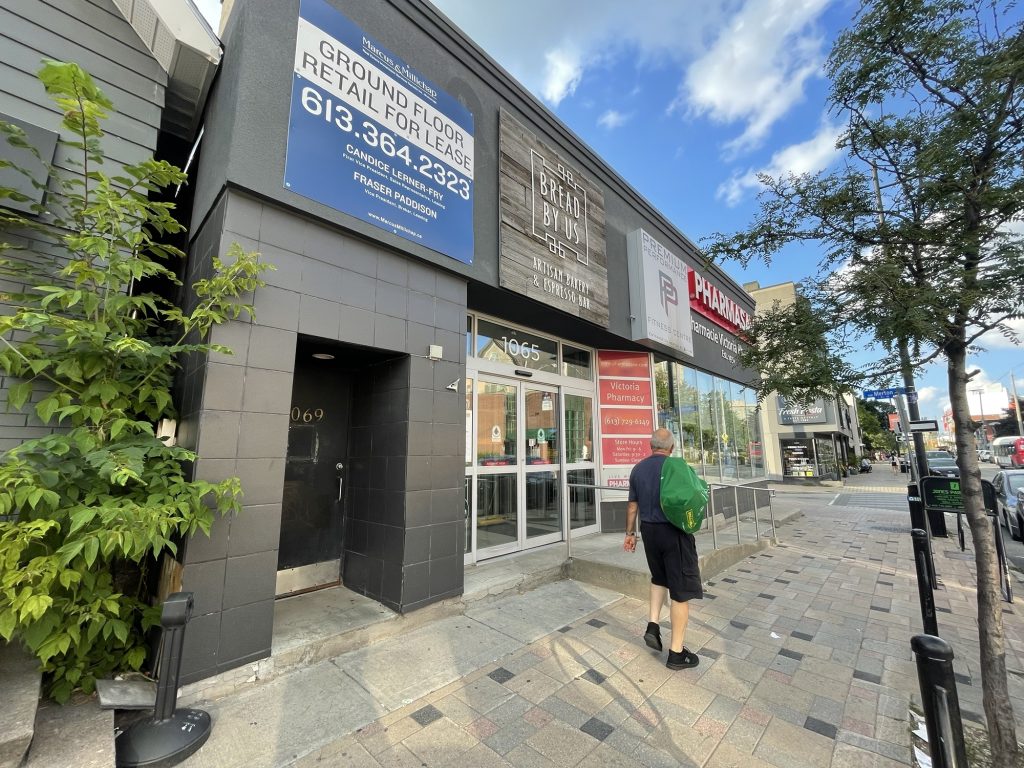
February 15, 1980: Ottawa gays distributed leaflets outside the Elgin Street theatre to protest against Cruising, a controversial film with Al Pacvno. American gays said the movie provided a “how-to” course on how to kill homosexuals. “We dont blame movie audiences, because they have no choice” Gays of Ottawa spokesperson John Duggan told the Ottawa Citizen. “We blame the movie industry for not portraying a true image of homosexuals.”
February, 25, 1981: Ontario gays waged a campaign to turf New Democratic Leader Michael Cassidy from his Ottawa-Centre seat. The gays said Cassidy did not show enough support during the controversial Toronto steambath raids. Organizers urged gays to spoil ballots and embarass candidates at riding meetings – particularly in Ottawa Centre. The pushback came a month after more than 200 Toronto police raided four Toronto steam baths. Hundreds of men were charged.
September 28, 1981: About 25 queer individuals protested outside of the United States Embassy in Ottawa, to demonstrate against an immigration law in that country which they claimed labeled homosexuals as “Psychopathic.” Gays of Ottawa organizers also said homosexuals were harassed at the border and forced to state their sexual orientation before gaining entry.
August 1983: Two known cases of Aids are reported in Ottawa and seven others are suspected. The first case was Peter Evans, a bisexual man in his 30s. The actor who recently returned from living in England participated in the city’s first AIDS walk-a-thon. He died the following January. The second case was a 28-year-old battling the disease.
Fear amongst Ottawa’s gay community starts to spread and questions mount over whether or no bathhouses should be closed.
“Bathhouses are not filthy holes in the wall,” then Club Ottawa owner Jerry Levy told the Ottawa Citizen. “They are extremely clean and brightly lit and probably mitigate the spread of AIDS. The steambaths are far healthier (to have sex in) than parks and bars.”
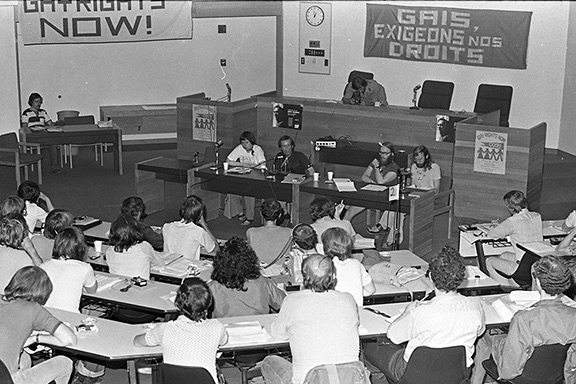
June 15, 1987: The National Capital Commission considers new landscaping and the RCMP promises to do more monitoring after nearby residents complain about gay cruising occurring at Remic Rapids Park. In letters sent to the NCC, parents stated their kids were picking up used condoms which were littered around the park.
1988: Bruce House is created to provide service to residents who are dying from AIDS. The disease was a death sentence that carried stigma and the organization wanted to provide the sick with dignity in their final days. The first home opened on Arlington Avenue and later moved to Everand Avenue. The service still runs today,providing stable housing, independence, and healthy living.
1989: At least 15 incidents of violence and hate crimes are reported targeting Ottawa’s LGBTQ2S+ community. Seven gay men are pushed off a cliff at Major Hills Park, with two dying from their injuries.
On Aug. 21, Alain Brosseau was dangled over the Alexandra Bridge connecting Ottawa to Gatineau and fell to his death in the water below. While Brosseau is believed to be straight, his killing was done on the assumption of him being gay because of the shoes he wore. That same night, Alain Fortin and Wilfred Gauthier were stabbed in their Orleans home by the same gang members. Both managed to survive.
January 11, 1994: A new gay bathhouse is approved by Ottawa’s planning committee on Lewis Street near Bank Street, but Club Ottawa owners are not pleased. Levy sends a six-page letter to the committee casting doubt on the credibility of the owners. According to the Ottawa Citizen, there were allegations of drunkenness, verbal abuse, and threats of intimidation.
February 7, 1996: About 15 demonstrators who were gay, bisexual, and lesbian, disrupted a Red Cross Blood clinic being held at Carleton University. They were protesting a health assessment questionnaire that they said discriminated against gay men. The question, in place since the 1980s, asked men if they had sex with other males since 1977. If the answer was yes, they could not donate blood.
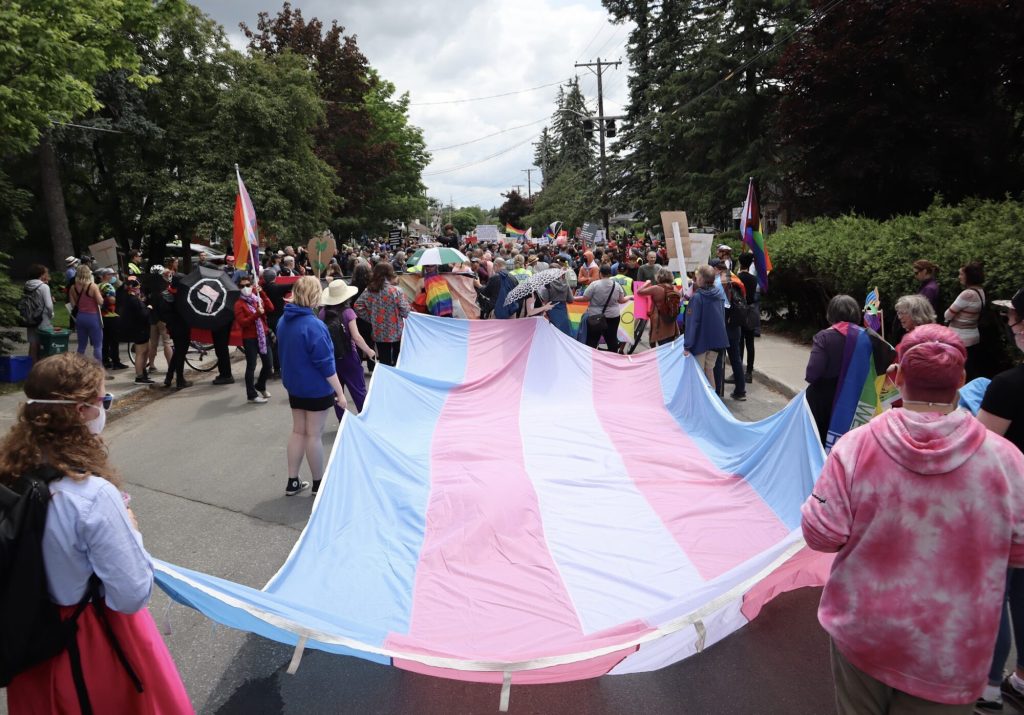
March 28, 2001: Disease breaks out amongst users of the Capitals two bath houses. Ottawa Public Health said six cases of syphilis and one suspected case of the disease were reported in the city – some of whom had contact with the sex clubs.
August 26, 2003: On August 23, 2003, thousands rallied on Parliament Hill and on the Steps of the Supreme Court of Canada to show their opposition against same sex marriage which would become legalized two years later.
June 9, 2023: A “gender ideology” demonstration is held outside Nepean High School and Broadview Public School in Westboro. Organizer “Billboard” Chris Elston rallies against puberty blockers — also known as hormone blockers — which are seen as a lifeline for transgender individuals. Children stomped on pride flags as parents, many who flew in from the United States, chanted homophobic remarks. Five people were arrested but no charges were laid. Counter protesters made up of LGBTQ2S+ members and allies of the community held colourful banners and sang chants of love and acceptance.
Quick Pride facts
- Before 1890, Canadians caught engaged in homosexual acts were charged with buggery and indecent assault upon a male. It was later changed to gross indecency. Prior to that, flogging or even death was sometimes the penalty.
- The earliest reports of gay cruising spots in Ottawa come from Bowles Lunch, a diner which was located at 30 Rideau St. Such incidents were also reported at nearby Rideau Bowling Alley, the Grand Central Hotel in the ByWard Market, and other nearby drinking holes. The YMCA, located at 123 Metcalfe, was also a prime social spot as it was a males-only club. Because the fabric of bathing suits clogged drains, men were expected to swim naked in the early days.
- The Lord Elgin Hotel, built around the time of the second World War, was Ottawa’s first semi-official gay bar. In the downtown tavern called Pick’s Place, plain-clothed RCMP officers would hide behind newspapers and photograph gay men for identification later. In 1981, management closed the bar at 3:00 p.m. as they had enough of their fruity clientele. Bartenders retaliated and opened the city’s first gay bar called 166B around the corner.
- In 1959, the RCMP started a humiliating campaign to identify homosexuals working in the public service. Using what was called a “fruit machine.” they checked pupil size, palm sweat and blood flow while showing the suspected LGBTQ individuals gay porn. A total of 8,200 homosexuals were identified – about a third of whom resigned or were dismissed because they were gay. The practice went on until 1975 when pushback from the Canadian Council on Religion and the Homosexual, which had been formed a decade prior, became too much.
- Since 1975, 19 gay men in Ottawa have knowingly died as a result of being killed or committing suicide because of their sexuality. They include Chris Raynsford, a 34-year-old gay man who was killed by someone he met online. His body was found in his Centretown apartment two weeks later. Jamie Hubley, the son of Kanata councillor Allan Hubley, committed suicide in 2011 after reoewred bullying. In grade 7, classmates attempted to shove batteries down the figure skater’s throat. In a suicide note posted to a blog, Jamie wrote: “I’m tired of life, really. It’s so hard, I’m sorry, I can’t take it anymore.”
